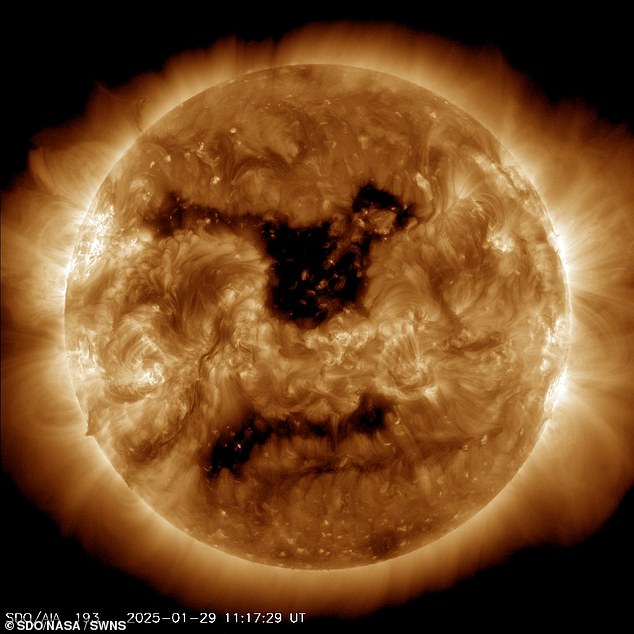
Imminent Solar Storm Threatens Global Power Grids with Hours-Long Blackouts
Massive Solar Storm Threatens Power Grids and Sparks Aurora Displays
A powerful solar storm is impacting Earth, raising concerns over potential radio blackouts, GPS disruptions, and power grid instability across the U.S. The geomagnetic storm, classified as G3 (strong) on a scale from G1 to G5, follows a coronal mass ejection (CME) from the sun that struck Earth on Tuesday. Officials warn that regions like the Mid-Atlantic, Northeast, and Midwest could face power fluctuations, while auroras may light up skies as far south as New York and Washington state.

The sun unleashed a burst of solar energy, triggering a G3 geomagnetic storm. (Image: Daily Mail)
Risks to Infrastructure
The storm’s charged particles can interfere with satellites, high-frequency radio communications, and power grids. The Space Weather Prediction Center (SWPC) highlights heightened risks in Virginia, Pennsylvania, New Jersey, Minnesota, and the Dakotas. Dr. Tamitha Skov, a space weather physicist, cautioned that prolonged southward magnetic fields could strain power systems, particularly in high-latitude countries like Sweden and Norway. While no major outages have been reported yet, grid operators remain on alert.
Auroras Light Up the Skies
The storm’s silver lining is a dazzling aurora display visible in 19 U.S. states, including Alaska, the Pacific Northwest, Upper Midwest, and parts of the Northeast. Skywatchers in New York, Pennsylvania, and Illinois may also catch glimpses. The best viewing times are between 10 p.m. and 2 a.m. local time, away from city lights. Smartphone cameras may capture the colors more vividly than the naked eye.
Understanding Geomagnetic Storms
Geomagnetic storms occur when solar plasma and magnetic fields collide with Earth’s magnetosphere. The current G3 storm—moderate but sustained—can cause voltage control issues in power grids and intermittent satellite navigation problems. The SWPC compares the storm scale to hurricanes, with G5 being the most severe.

Areas in red indicate higher risks of power grid disruptions. (Image: SWPC/Daily Mail)
Historical Context
A similar but stronger G4 storm in October 2024 prompted warnings but caused no widespread outages. Experts note that while solar storms pose risks, modern grid safeguards have improved resilience. However, regions recovering from recent hurricanes or with aging infrastructure remain vulnerable.
Key Takeaways
- Power Grids: Mid-Atlantic, Northeast, and Midwest U.S. regions face the highest disruption risks.
- Auroras: Visible in 19 states; optimal viewing requires clear, dark skies.
- Preparedness: Grid operators and satellite teams are monitoring for sustained impacts.
As the sun approaches its 11-year activity peak in 2025, such storms may become more frequent. For now, scientists urge caution but reassure that Earth’s defenses are holding strong.
(Word count: ~600)


